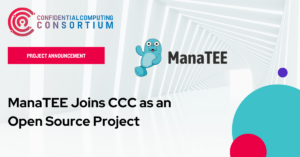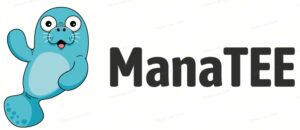Author: Sal Kimmich
Introduction:
 As enterprises increasingly adopt multi-cloud architectures, managing data governance across distributed systems has become more complex. With data privacy regulations like GDPR and CCPA requiring organizations to maintain strict control over sensitive information, ensuring compliance while leveraging the flexibility of multi-cloud systems presents a significant challenge.
As enterprises increasingly adopt multi-cloud architectures, managing data governance across distributed systems has become more complex. With data privacy regulations like GDPR and CCPA requiring organizations to maintain strict control over sensitive information, ensuring compliance while leveraging the flexibility of multi-cloud systems presents a significant challenge.
Enter Confidential Computing: by using trusted execution environments (TEEs) and remote attestation across cloud platforms, organizations can ensure that sensitive data is processed in a secure and compliant manner. This blog will explore how decentralized data governance can be achieved in multi-cloud environments using confidential computing technologies.
Why Is Confidential Computing Essential for Multi-Cloud Data Security?
In a multi-cloud setup, organizations often distribute workloads across multiple cloud providers to meet their operational needs. However, this also increases the potential attack surface, as data flows through various infrastructures. Ensuring that data remains secure and compliant with regulations across these disparate environments is critical.
Confidential computing provides a solution by ensuring that sensitive data is processed in secure enclaves within TEEs, which isolate the data from unauthorized access. Using remote attestation, these TEEs can be verified, ensuring that the code executing within the enclave is trustworthy.
This ability to isolate and verify processing environments makes confidential computing essential for ensuring data security and governance across multi-cloud deployments.
What Is Decentralized Data Governance and Why Does It Matter in the Cloud?
Decentralized data governance refers to the practice of managing data policies, access controls, and compliance requirements across multiple locations or platforms without relying on a single centralized authority. In a multi-cloud environment, this is particularly challenging, as each cloud provider may have different security standards, policies, and regulatory requirements.
By decentralizing data governance, organizations can ensure that each cloud provider adheres to specific security and compliance rules. Confidential computing enables this by allowing organizations to enforce strict access controls and data policies at the TEE level, ensuring that data governance is maintained consistently, regardless of where the data is processed.
This approach to governance is crucial for businesses that need to operate in multiple jurisdictions or across cloud infrastructures, ensuring that they meet all relevant regulatory requirements.
How Open Enclave SDK Powers Secure Data Governance in Multi-Cloud Environments
One of the key tools that enables secure data governance in a multi-cloud environment is the Open Enclave SDK. Developed under the Confidential Computing Consortium, the Open Enclave SDK provides a consistent abstraction for creating TEEs across different platforms, including Azure, AWS, and Google Cloud.
By using the Open Enclave SDK, developers can build applications that securely process data in TEEs across multiple cloud environments without having to rewrite code for each cloud provider. This ensures that data remains secure and compliant with governance policies, regardless of the cloud infrastructure being used.
Additionally, the Open Enclave SDK supports remote attestation, allowing organizations to verify that data is being processed in trusted environments across all cloud platforms.
How Remote Attestation Ensures Compliance Across Multi-Cloud Systems
As organizations move workloads across different cloud providers, ensuring that each platform complies with relevant data privacy laws is a key concern. Remote attestation provides a mechanism to verify the security and integrity of TEEs, ensuring that sensitive data is processed only within approved environments.
In the context of GDPR, for example, remote attestation can help ensure that personal data is processed only within TEEs that meet the necessary security and privacy requirements. This ability to verify compliance on the fly allows businesses to confidently use multi-cloud infrastructures while maintaining adherence to data protection regulations.
Remote attestation helps organizations remain agile in the cloud while still upholding strict data sovereignty requirements, ensuring compliance with the CCPA, GDPR, and other global regulations.
Case Study: Confidential Computing in Real-World Data Sovereignty Challenges
A real-world example of decentralized data governance using confidential computing is the case of Italy’s Sovereign Private Cloud initiative. Italy’s government aimed to ensure that critical public sector workloads were processed within secure and private environments, adhering to the country’s strict data sovereignty laws.
By adopting confidential computing and remote attestation, Italy’s sovereign cloud enabled secure processing of sensitive public data across distributed environments. This approach ensured that even when data was processed outside of government infrastructure, it was handled securely in trusted execution environments, and compliance with Italian data protection laws was maintained.
To dive deeper into this solution, you can watch the session titled Sovereign Private Cloud: A Confidential Computing Solution for the Italian Public Administration from the Confidential Computing Summit 2024, where the implementation of the Sovereign Cloud is discussed in detail. The recording is available here.
This use case highlights how confidential computing can help address data sovereignty concerns, enabling organizations to operate securely across multiple cloud infrastructures without compromising compliance.
Achieving Decentralized Data Governance with Confidential Computing
As organizations continue to embrace multi-cloud strategies, managing data governance across distributed environments becomes more complex. Confidential computing offers a powerful solution by securing data in trusted execution environments and enabling remote attestation to verify compliance.
By leveraging tools like the Open Enclave SDK, businesses can maintain control over their data policies and ensure that sensitive information is processed in secure, compliant environments across all cloud platforms. As data sovereignty concerns grow, particularly in industries like healthcare and finance, confidential computing will play an increasingly important role in ensuring data governance and regulatory compliance across the multi-cloud landscape.
Hyperlinks Summary:

 What if you could collaborate on AI projects, run complex models, fine-tune them, and even monetize both your models and data – all while retaining full control and ensuring confidentiality? It might sound impossible, especially when involving multiple participants you don’t need to trust – or even know.
What if you could collaborate on AI projects, run complex models, fine-tune them, and even monetize both your models and data – all while retaining full control and ensuring confidentiality? It might sound impossible, especially when involving multiple participants you don’t need to trust – or even know.
 As enterprises increasingly adopt multi-cloud architectures, managing data governance across distributed systems has become more complex. With data privacy regulations like GDPR and CCPA requiring organizations to maintain strict control over sensitive information, ensuring compliance while leveraging the flexibility of multi-cloud systems presents a significant challenge.
As enterprises increasingly adopt multi-cloud architectures, managing data governance across distributed systems has become more complex. With data privacy regulations like GDPR and CCPA requiring organizations to maintain strict control over sensitive information, ensuring compliance while leveraging the flexibility of multi-cloud systems presents a significant challenge.




